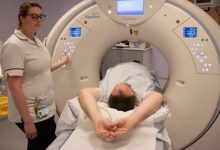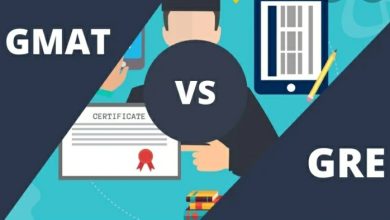How long does it take to become a Pilot?

A student pilot license can be obtained in as little as three weeks of training, but meeting the requirements for flying commercial, private, or multi-engine aircraft can take much longer. The length of time you spend training will depend on what you want to fly and how you want to fly. If you want to fly a passenger plane for a commercial airline, you’ll need to go through the Federal Aviation Administration’s (FAA) training, practice, and certification process, which will take at least two years.
Related Post:Online Entrepreneurship degree: Admissions and Universities
FAA-approved program certificates
Although not exhaustive, the following are the most prevalent types of pilot qualifications for people contemplating a career in aviation:
Pilot certificate for students
Three weeks of training will prepare you for the next steps in your pilot career.
Private pilot training usually takes six to twelve months and requires at least 40 hours of flight time. Before you can earn your commercial pilot licence, you must first get your private pilot certificate. Private pilots learn to fly a single-engine plane without the help of a copilot. This is not a certification for professionals.
Commercial Pilot Program
While training can be completed in as little as 12 weeks, the additional training required for this license will most likely take six to nine months and will require 250 hours of logged flying time. You can fly professionally after earning your commercial pilot licence, but you will not be qualified to fly large aircraft carrying passengers for a major airline. With a CPL, you may teach skydiving, provide flight instruction, crop dusting, banner towing, provide flying tours, or engage in a variety of other aviation-related jobs on the ground.
Flight Instructor Certification
This certificate is only required if you want to instruct, rate, and/or endorse student pilots who are working for their pilot’s license. It’s not uncommon to work as a flight teacher while pursuing higher certification, allowing you to earn money while completing your required flight hours.
The length of time it takes to become an airline transport pilot varies, however some schools offer programs as short as nine months. You must complete 1,500 flight hours in addition to your studies, though this requirement can be waived for military pilots or those with an associate’s or bachelor’s degree in aviation. This is the bare minimum required for working as a commercial airline pilot.
Engine Rating
This additional rating takes only a few weeks to complete and is a requirement for any airline pilot in charge.
You’ll need time to register for and pass your examinations, as well as complete the other prerequisites, in addition to schooling and flight hours.
Basic Commercial Pilot Certificate Requirements
The following are the basic criteria for becoming a commercial pilot:
You must be at least 18 years old in order to participate.
A valid, current FAA Second-Class Medical Certificate is required (while you only need a Third-Class Medical Certificate as a student pilot, you will need a Second-Class Medical Certificate to operate as a commercial pilot).
The English language must be read, spoken, written, and understood.
To pass the FAA written and practical flight examinations, you must receive the requisite training, which must be documented in your logbook or official training records.
You must either have a private pilot certificate or meet the 61.73 standards.
A total of 250 hours of documented flight time is required. If you train at a recognized Part 141 Flight School, you can become a commercial pilot with just 190 hours of experience.
The FAA Commercial Pilot Knowledge Test must be taken and passed with a minimum score of 70%.
According to the Commercial Pilot Airman Certification Standards, you must pass the FAA Practical Flight Test with a designated pilot examiner (DPE), which includes an oral examination and a checkride (ACS).
Why Should You Become a Pilot?
The View Is Spectacular
You have no idea what you’re missing until you’ve seen the view from 1,000 feet. It’s enchanted. You can see that vista whenever you want if you have a private pilot license. When you get a commercial pilot license, you may be able to see it every day on your way to work.
It’s self-evident, yet it bears repeating: A view office is always preferable to a cubicle.
You’ll be a part of an exclusive group.
Although aviators have a reputation for being bold, outspoken, and risky, this caricature is far from accurate.
People who work in the aviation business are a unique breed. When you become a pilot, you immediately become a member of a brotherhood that spans national boundaries and cultures. It’s like having a new family, complete with wacky uncles and holiday get-togethers.
Your new aviation pals will welcome you, assist you, and support you as a new pilot. They’ll make you desire to never give up.
The aviation business is made up of amazing, one-of-a-kind individuals who share a passion for flying with a level of intensity and excitement rarely seen elsewhere. You’ve seen this enthusiasm in action if you’ve ever been to Oshkosh. It’s contagious – and a touch wild – but there’s no going back once you’ve been a part of it.
Related Post:Aeronautical engineering salary
Flying Improves Your Intelligence
This isn’t a joke. Being a pilot improves your intelligence. You’ll learn things you never imagined you’d need to know. You’ll improve your planning, logical decision-making, and meteorological skills. You’ll learn how to manage resources effectively, be patient, and work safely while maintaining a feeling of urgency. You’ll quickly learn to do math in your head. (After all, when your life is on the line, you quickly learn how to accomplish anything.)
It’s useful and convenient.
Access to personal jets is one of the nicest aspects of being a pilot. Pilots have the advantage of being able to drive straight up to the terminal and walk right into an airplane. It’s a privilege enjoyed by a small group of people, and it’s quite easy to avoid the airport’s main security lines.
However, the convenience factor does not end there. It’s also convenient to fly into any airport you want, travel at your own leisure, and not have to worry about extra baggage fees or whether or not your dogs are allowed to accompany you. You won’t have to wait at airports for layovers or sit three inches away from complete strangers in an airliner’s cabin while being fed peanuts.
Business owners will find that flying themselves to meetings or company locations saves them a lot of time (and time equals money, right?). They can go whenever they want, arrive whenever they want, and take in the scenery along the way.
It’s exciting
Flying a plane is a lot of fun. That is one of the reasons why people are drawn to it in the first place. It’s a blast getting behind the wheel of a massive machine, pressing the throttle forward, and taking off from the runway.
Even after the initial surge of excitement has worn off and your movements have become virtually automatic, there is always somewhere new to fly or a new airplane to learn.
Most pilots enjoy practicing maneuvers as well as interacting with other pilots in the hangar and sharing anecdotes about remarkable trips and places visited.
Not to mention the sense of success you get when you safely land after each flight, knowing that you were the one in charge.
The Cost of Flight School
Obtaining a commercial pilot’s license can be done in a variety of ways. Plan on paying $100,000 or more if you opt to attend a four-year college or university that offers an aviation degree. Some programs cost upwards of $30,000 a year in tuition. The benefit is that you will receive a bachelor’s degree as well as all of the necessary flight qualifications.
You can also enroll in a private school to obtain a business license. Because flight schools promote their pricing depending on several variables, it’s tough to pin down an actual cost for private schools. Plan to invest $40,000-$60,000 over the course of one or two years. Flight schools with a good reputation can cost upwards of $80,000. Keep in mind, though, that most airlines will need proof of a bachelor’s degree. So, if you decide to pursue it individually, don’t forget to budget for it.
The Best Aviation Schools in the United States
Louisiana Tech University is a public university in Louisiana.
Louisiana Tech University has maintained a national reputation for producing great graduates since 1967. The Professional Aviation and Aviation Management programs focus on developing leaders in the aviation sector by emphasizing knowledge, abilities, and experience. There is also a strong alumni network, which includes airport designers, commercial pilots, flight school teachers, and transportation and development experts.
Throughout the year, students can benefit from ground, simulator, and flight training. The university purchased a new fleet of 12 Cessna Skyhawk and Piper Arrow planes in 2017. In addition, numerous Fixed Based Operators in the region, notably the Louisiana Airport Managers Association and Ruston Regional Airport, have aviation management cooperative agreements with LTU. LTU aviation students have access to a variety of internship opportunities with major airlines, smaller airlines, corporate aviation, and government organizations thanks to industry connections.
South Dakota State University is a public university in South Dakota.
South Dakota State University offers affordable, high-quality aviation instruction. Aviation students learn from 28 full-time and part-time flight instructors on campus, as well as 14 airplanes. Students are evaluated to establish competency in the senior capstone course, which serves to bridge the gap between knowledge and practice.
To enhance their study, aviation students can select between two specialities. Students interested in becoming Certified Flight Instructors or professional pilots in the aviation sector should enroll in Aviation Education.
Recruiting top students and alumni as flight instructors at SDSU permits aviation graduates to better the program in which they previously participated. Students in the aviation maintenance management specialization learn how to repair and maintain planes.
100% of the Class of 2019 were placed in professional flight employment as a result of the in-depth aviation programs. The bulk of them went on to work for airlines like United, SkyWest, and Republic Airways as flight instructors.
Western Michigan University is located in Kalamazoo, Michigan.
Western Michigan University offers one of the largest aviation programs in the country, with over 1,100 undergraduates. Furthermore, it is Michigan’s only complete aviation school at a public university. These accomplishments demonstrate WMU’s importance in the future of aviation education.
A fleet of 50 aircraft is used to train the next generation of aviation leaders. The department is able to make upgrades and ensure that students have access to the most up-to-date technology by regularly examining the planes. These planes are used for a variety of purposes, including aviation maintenance and flight training.
WMU’s Aviate program, a prototype career development project, demonstrates how well trained and sought-after WMU graduates are.
Utah State University is a public university in Utah.
Aviation students at Utah State University are taught by highly qualified academics from a range of backgrounds. Certified Flight Instructors assist students in obtaining the hands-on instruction they require in order to pass their check-ride and prepare for their future employment. Students enjoy a more personalized learning experience because of the smaller class sizes.
The restricted ATP program at the school allows pilots to enter the industry with less hours than other programs. Furthermore, the fast route to flying for an airline allows aviation students to get a head start on their careers by receiving comprehensive and quick training.
Students can network with people who share similar interests and backgrounds through Utah State organizations. The NIFA Flight Team provides social events and professional development excursions for aviation enthusiasts. DroneWorx is a competition for students interested in unmanned aerial systems.
Kansas State University is a public university in the state of Kansas
More Master Certified Aviation Instructors work at Kansas State University than at any other university in the country. This group of talented and experienced flight instructors offers a top-notch education to aviation students. They give courses in meteorology, aerodynamics, advanced aircraft systems, and flight labs, to name a few. Students at Kansas State University study a variety of courses in addition to aviation, such as management and business ethics.
The Salina Regional Airport, which is located immediately close to Kansas State University, offers both education and experience. It has a 12,300-foot runway, as well as crosswind and parallel runways, to allow training beyond the bare minimum. Graduates of Kansas State University are confident in their ability to fly in all weather situations and meet industry requirements.
Aviation graduates are highly successful, whether they want to be flight instructors or airline captains, with a program placement rate of 98 percent. Airline, freight, charter, business, and military pilots are among Kansas State’s alumni.
Related Post:How much does a nurse anesthetist make ?








